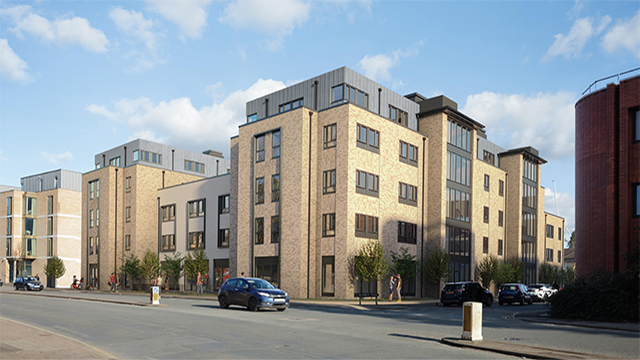UK doesn’t have the space to be a science superpower
The UK’s hopes of becoming a science superpower are being held back by a lack of suitable space.
Oxford and Cambridge now have almost no lab space available, according to two reports published today.
Bidwells estimates that there is just 10,000 sq ft of space available in Cambridge, compared with 2m sq ft of demand.
The UK’s hopes of becoming a science superpower are being held back by a lack of suitable space.
Oxford and Cambridge now have almost no lab space available, according to two reports published today.
Bidwells estimates that there is just 10,000 sq ft of space available in Cambridge, compared with 2m sq ft of demand.
There is a similar picture in Oxford, where there is about 25,000 sq ft available compared with requirements from businesses of 845,000 sq ft.
Meanwhile, Cushman & Wakefield expects the mismatch will persist until at least 2025 when 4m sq ft of lab buildings are due to be completed.
Investment volumes exceeded £2.45bn for life sciences real estate in the Golden Triangle in 2022, according to a new sector report from Cushman & Wakefield.
The firm’s Life Sciences Golden Triangle Lab Report showed that Q4 rents had increased on 2021 levels by 10% in Oxford and London, to £55psf and £110psf respectively. However, the scarcity of space in Cambridge saw rents jump by 18.2% to £65psf.
Venture capital investment into life science companies fell in 2022 to £2.56bn, down 42% compared with 2021, but is still 22% higher than previous years.
Cushman & Wakefield said there was little evidence this would diminish in 2023, and expects to see sustained investment interest throughout the year. And the slackening has not impacted demand for space, either.
Take-up for the year in the Golden Triangle reached 635,866 sq ft, with the majority let on a Category A Lab specification.
London saw the most take-up last year, accounting for 39% of all Golden Triangle locations, following a record year in 2021.
However, supply has continued to lag far behind demand, and a lack of quality labs has raised headline rents with modest take-up levels, limiting leasing success last year.
Michael Aston, head of life sciences at Cushman & Wakefield, said: “Supply of high-quality stock will remain out of kilter for some years to come. A lot of venture capital and big pharma money is waiting on the touchline to access the best biotech investments, while pension funds, sovereign wealth funds and other buckets of capital are queued up to invest in life sciences real estate.”
While supply increased by 350,000 sq ft in 2022, and a further 2m sq ft of development is expected to start in 2023/24, there is However, demand will continue to outstrip supply until 2025/26, when approximately 4m sq ft of supply is set to be delivered.
There is currently 1.7m sq ft of lab space in the pipeline for Oxford, a 21% increase on last year’s levels. London’s pipeline currently has 438,000 sq ft, a 13% increase. But while Cambridge has more than 5m sq ft in the pipe, this has remained unchanged since the start of 2022.
However, it added that delays to the start of construction and the impact of wider macroeconomic issues have created challenges and prevented supply from meeting demand and will continue to do so for the next few years.
Aston added: “We expect new stock to come online slower than previously forecast due to planning constraints and threatening economic headwinds. Land values have seen a correction in the short term to reflect the move in interest rates and cost inflation, however rents have seen a strong year of rental growth.”
The first half of 2022 accounted for 60% of investment volume, with H2 volumes dipping to reach a total of £2.45bn.
While this is below 2021’s investment volumes, the 2022 total remains above prior years. As a result Golden Triangle prime yields have shifted outwards to 4.25% at the end of 2022.
The sector in 2022 also saw more value add, development and repurposing activity, demonstrating the lack of available stock. Cushman & Wakefield said investors were “moving further up the risk curve to achieve exposure in the sector”.










